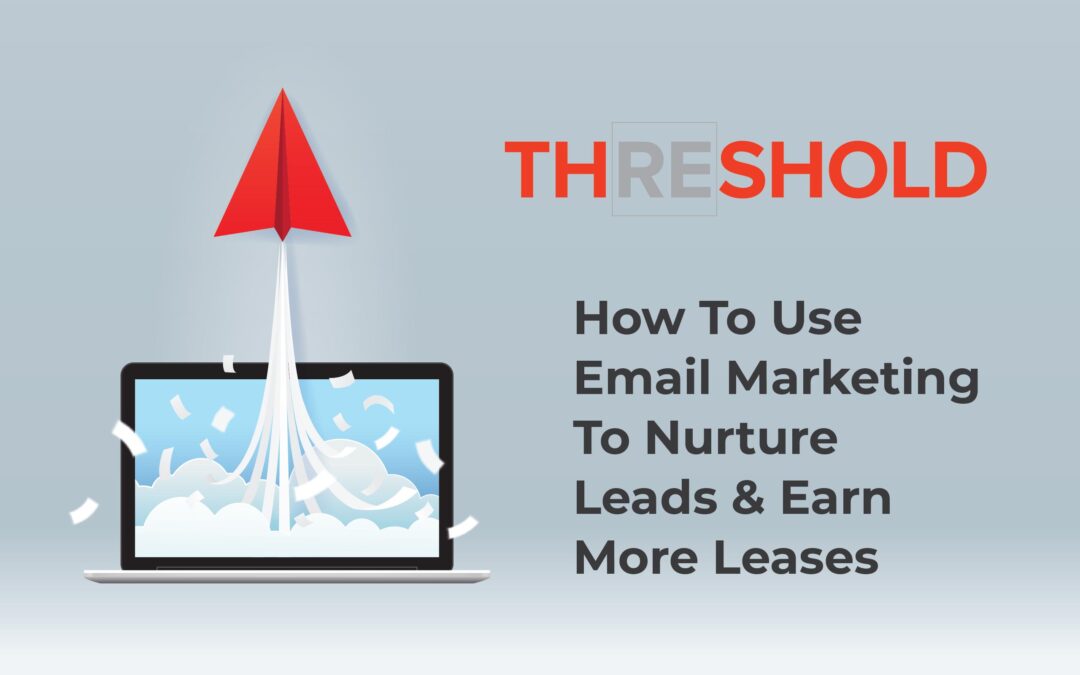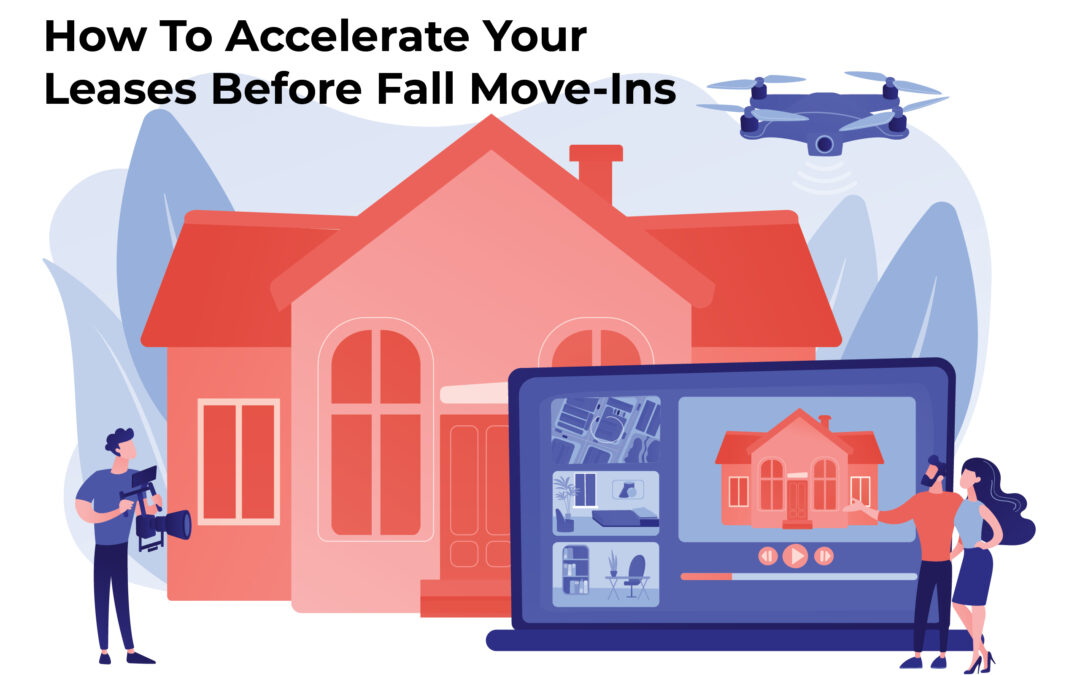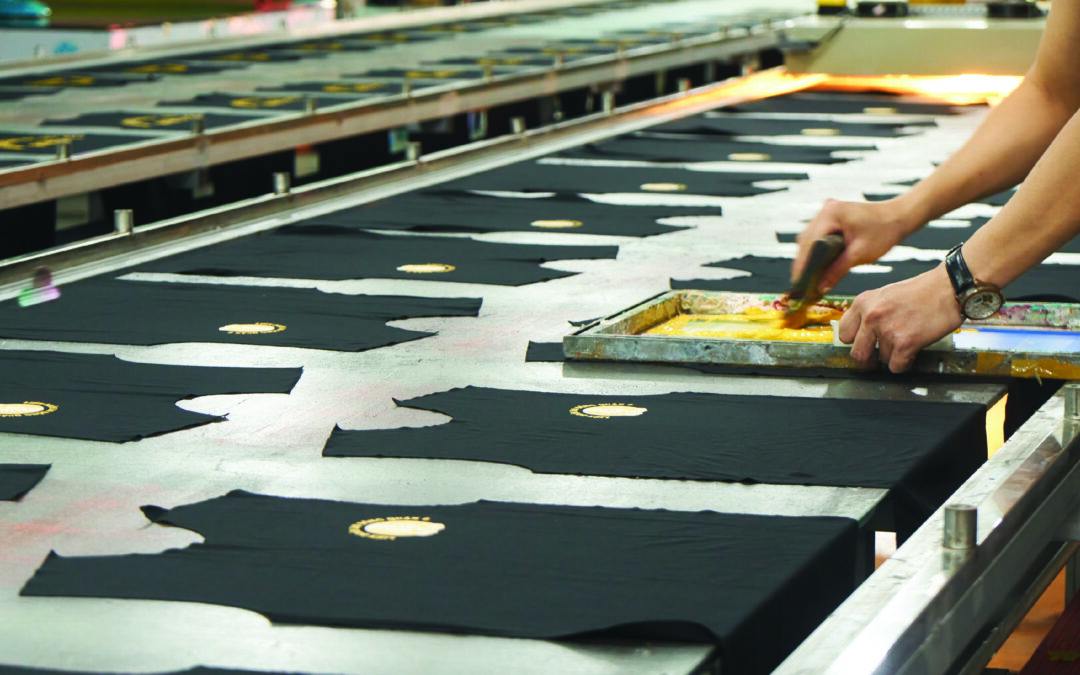
by threshold | Jun 14, 2022 | Digital Marketing, Marketing, Tech/Web
What role does email marketing play in your larger real estate marketing plan? What does your email nurture path look like? How effective is your email messaging and design?
If you’re unsure of the answer to some of these questions, you could be missing out on one of the most cost-effective digital marketing strategies available today. Although other digital tactics like search ads and SEO tend to get more of a spotlight, email is still one of the most effective ways to nurture leads without overspending.
There are a lot of advantages email marketing has over other areas of digital real estate marketing. For example, it excels as a retargeting strategy, keeping your property top-of-mind at various stages of a prospect’s housing search or reminding a current resident of all the reasons to renew. It’s also easy to track performance, with open, click-through, bounce, and unsubscribe rates all easily visible in any major email client. Plus, it reaches your audience whenever and wherever they are, with most people checking emails multiple times every single day.
If you’re looking for general email marketing tips, try starting with our post on Email Marketing for Apartments: Best Practices That Actually Earn Leases. That post will get you started with some of the core principles and tactics behind successful email marketing. If you’ve read that article and you’re ready for more email marketing ideas related to nurture paths, online reputation, improved analytics tracking, time-saving tactics, and more, then keep reading. These are the tips for you.
Set Up a VIP List or Waiting List
Setting up a VIP List for a new development that hasn’t begun leasing or a waitlist for your fully leased-up property is a great way to get more leads into your leasing funnel and get a headstart on leasing down the road. After all, email marketing is only as strong as your list of email addresses; you can’t make the most of this strategy if you have no one to send marketing emails to.
For VIP Lists, be sure to add a sign-up form to the landing page for you community and entice sign-ups by giving VIPs the chance to be the first to hear about development updates, availability, and special offers.
To implement a waitlist, consider adding a sign-up form on the floor plans page with messaging that directs users who are looking for currently unavailable floor plans to sign up for the waitlist to be notified when this floor plan is available. That way, once this floor plan has availability you can send their notification email and start them on a lead nurture campaign that includes info about special rates and other community perks to keep your community top of mind.
Define Your Email Nurture Path(s)
Speaking of nurture paths, do you already have an automated nurture path set up in your email client of choice? If not, you’re likely missing out on the full potential of email marketing. Even with a great CRM platform, it’s easy to lose track of all the individual touchpoints that add up to effective email marketing campaigns when you haven’t automated the process.
Creating an automated Customer Journey is possible in most leading email clients, including MailChimp and they’ll save you a lot of time and headache in the long run. Customer Journeys (what we’re calling Nurture Paths) help you create a customized series of emails depending on the behavior of your audience. For example, you can automatically send a welcome email with some basic information when a contact is added to your email list. Then, depending on whether they open that email, you can send different follow-up emails with targeted messaging to try to engage them further. Or, if they clicked a particular link within the email, you can set up an automated email to send them more information related to the link they clicked on. This way, you tailor your marketing messaging in accordance with each user’s individual priorities and needs.
One way to further specialize your customer journey (AKA nurture path) is to create tags for different types of leads coming in. For example, student housing communities might have tags for parents vs. students and senior apartments might have tags for seniors vs. their children while multifamily communities might create tags for resident referrals vs. leads generated by paid marketing strategies. That way, the only manual step you have to do is tagging each new contact that comes in wherever possible. Tags like these help you target your email content based on different segments of your audience and what is most important and relevant to them.
Send Timely Emails About Special Rates
When you implement a special, you want to make sure everyone knows about it. After all, a special rate can easily be the deciding factor in a prospect’s housing decision. Make your specials work harder by sharing them with your leads as soon as they are implemented.
Improve Your Online Reputation By Earning More Reviews
Prospects aren’t the only ones you should be marketing to. Email marketing can also be used to turn current residents into brand advocates. For example, a friendly email asking current residents to leave a review can help improve your online reputation and entice more future residents.
To increase the likelihood of positive reviews, consider the timing of this email. A good time to send review request emails might be after a maintenance request has been completed in a timely manner or after a successful resident event. You can also send tour follow-up emails after a prospect has taken a tour in order to thank them for coming, remind them of any specials, provide an application link, and prompt them to leave a review about their tour experience.
Get Better Insights By Using UTM Codes
UTM codes are added to the end of a URL so that Google Analytics can identify the source of a click more easily. Incorporating them in your emails can help you get more digital marketing insights to understand how your audience thinks and behaves. For example, with a UTM code in place, you can explore the user journey on your site when someone arrives after clicking an email. How many pages (and which ones) do they view after clicking in an email? Do they take certain actions when clicking through from one email more than another? What email content corresponds with more conversion actions? Implementing UTM codes in your email links can help you gain powerful insights like these.
Save Time With Ready-To-Send Email Templates
Designing an email that impresses prospects and stands out from the sea of other emails in their inbox isn’t easy. After all, the message is only part of the puzzle and a poorly designed email could even backfire by making you seem amateurish. But great design takes time and graphic design isn’t a skill most property managers have in their back pocket.
That’s there email templates can come in handy. Whether you create a template internally, buy one for cheap from a site like Threshify, or work directly with a real estate marketing agency to create ready-to-send email templates customized for your brand, using a template can save hours of time, saving you money and headache in the long run. Consider creating templates for everything from tour confirmations to rent reminders to maintenance request confirmations to review requests to rent renewal notifications. Remember, marketing shouldn’t stop after a resident moves in. Emails are a great way to improve resident experiences and earn more renewals, referrals, and positive reviews.
At Threshold, we regularly create ready-to-send email templates customized for seasonal events, leasing milestones like tours, move-ins, and lease renewal reminders, or ad hoc templates requested by clients. In fact, our templates are typically animated in order to increase email engagement and really wow prospects and residents alike. Ask your real estate marketing partner if they can create email templates like these for your community or reach out to us if you’d like to learn more about Threshold’s email marketing services.

by threshold | May 24, 2022 | Digital Marketing, Marketing
In the world of student apartment marketing, what you do during the spring and summer months can make all the difference in next year’s occupancy rates. If you’re struggling to fill your final beds for summer or fall semesters, this blog is for you. These digital marketing tips can help you get heads in beds fast.
Use Geofencing To Your Advantage
Know when your target audience is likely to be in town and take advantage of it with geofencing campaigns targeting specific locations. Housing fairs, new student or transfer student orientations, and community or leasing events open to the public are the perfect kinds of events to capture. Once you’ve captured your audience through this geofencing campaign, retarget them with tailored messaging to increase brand awareness, encourage tours, and increase foot traffic. Event retargeting allows you to connect more personally with the audience you captured because you know they attended a specific event for a specific reason and you have a solution to a need that they are looking to satisfy—a place to live.
Raise Your Ad Spend Now When It Matters Most
With most student housing properties, we see August move-in dates and May-July move-out dates, so don’t be afraid to spend your marketing budget in the spring when it matters most and you’re down to the wire to fill beds for summer or fall. Spend your budget on digital marketing tactics that will drive qualified traffic—like search ads—or increase brand awareness—like geotargeting or social ads. Speaking of social ads, don’t just stop at Facebook and Instagram. Think about TikTok and/or YouTube where a video component can go a long way to encourage online engagement. And don’t forget to implement a retargeting component to keep your brand top of mind as prospects continue shopping.

Scale your budget back when you’ve reached your leasing goals and maintain a presence online without breaking the bank. Then do it all again next year. Being flexible with your ad spend throughout the year helps maximize the impact of your ad budget by allowing you to solve for leasing challenges quickly or proactively get in front of them before they even become a challenge.
Strategically Expand Your Audience Targeting
Expand your audience targeting by creating custom audiences based on websites your audience may have visited such as a university housing page. Several tactics allow for customer matching or lookalike audiences. Use data that you already have collected to find similar users.
Refine Your Messaging to Earn More Qualified Traffic
What REALLY sets you apart from your competitors? Ask yourself the question, “Why would a student choose my property over our competitors?” Focus on one or two key differentiators in your ad messaging in order to tap into the segment of your student audience that really values what makes your community unique. For example, if your community is located right across from campus and your competitors are a mile away, focus on your location, using clever phrasing when you can. “Tired of taking the shuttle?” is a great way to get your point across in a playful way.

If you’re not sure what messaging to focus on, try listening to feedback from prospects and residents. What questions are they asking when they call you or visit your leasing office? What feedback have they given you about other properties they have visited in the area? What do they mention in positive reviews on your community? Notice any trends within the feedback and incorporate into your messaging where possible. Getting a lot of calls about pricing? Prominently display pricing in your ad copy and utilize price extensions in search. Getting a lot of questions about a specific floor plan layout? Create a carousel ad on social highlighting that floor plan, detailing the features, and incorporate some photos of that specific floor plan.

And don’t forget about the parents. Parents are still involved in housing decisions and are most likely paying the bills, so don’t leave them out. Your messaging can still be amenity focused and playful while still taking into account the things that are important to parents: all-inclusive living, fully furnished, privacy, etc. Just remember where your parent audience is. Most likely, parents are on Facebook while students are on Instagram, TikTok, or YouTube. Remember to use multiple ads and select different placements so you can tailor your messaging for students and parents.

by threshold | Apr 19, 2022 | Digital Marketing, Marketing, Tech/Web
In the world of real estate marketing, video advertising remains underutilized. It’s well-known by experts in the industry that real estate brands tend to be later adopters of digital strategies, so it comes as no surprise that CTV advertising on platforms like Hulu and other streaming services is still catching on.
If you are among the real estate professionals who have recently started to wonder if CTV advertising is right for your brand or you’re completely new to the topic of CTV advertising and want to learn more, this article is for you. We’ll be explaining what CTV advertising is, how it works, and where it excels as part of your real estate marketing plan. As you read on, you’ll learn how running CTV ads on Hulu and other top streaming platforms could earn you more leads and leases.
What Is CTV Advertising (and how is it related to Hulu)?
CTV stands for Connected TV, which refers to today’s Smart TVs and other devices that allow you to stream digital video content on your TV. Popular examples include Roku, Apple TV, Google TV, and Amazon Fire. These Connected TV devices allow users to stream content through a variety of apps such as Hulu.
This is where advertising campaigns come in: ads are shown while users stream content on CTV apps, much like a traditional commercial on cable TV. Hulu is just one of dozens of streaming platforms where CTV ads can be placed. Other popular platforms include Pluto TV, tubiTV, and Crackle.
Because connected TVs have become so ubiquitous in recent years, this form of advertising represents a promising frontier for real estate marketers. In fact, 82% of households in the US have at least one Connected TV device. Millennials represent the bulk of Connected TV users, with Gen X and Gen Z not far behind, making this particularly promising for multifamily marketing and student housing marketing as well as the next generation of active adult and senior housing marketing as older Gen Xers begin to move into these age ranges and younger Gen Xers and Millennials help make housing decisions for their older parents.

Targeting Tactics For CTV Advertising
One of the benefits of CTV advertising is the wide array of targeting tactics available to marketers. Not only do real estate marketers have the usual demographic and behavioral targeting tactics at their disposal (such as specific interests, websites visited, and searches performed), they also benefit from addressable marketing tactics that allow them to target a specific address list or use custom data aggregation and GPS data.
Marketers may also retarget users who have already been served a CTV ad, encouraging clicks and conversions by serving ads on other platforms and devices to an audience that is already aware of their brand.
How Is Success Measured for CTV Ad Campaigns?
Video completion rates, mute rates, pause rates, and impressions are among the key performance indicators (KPIs) for CTV ad campaigns. These metrics help determine the extent to which users are actually viewing your CTV video ad.
When it comes to tracking ad engagement and conversions, online conversions are measured by tracking whether a user visited your website and completed a conversion action (such as a contact form fill or application start) on a device within their household after being served your ad. Meanwhile, offline conversions can be measured by tracking when a user’s mobile device enters a conversion zone (such as your leasing office), which is defined by drawing a micro-geofence around the desired location.
These KPIs can be broken out by channel/app, device, and keyword to provide further insight into how your CTV ads are performing and how to further optimize for your target audience.
How Effective is CTV Advertising?
At Threshold, we’ve seen exciting results from our CTV advertising campaigns, but there’s no need to take our word for it. In addition to strong performance across the KPIs mentioned above, marketers using CTV advertising have also reported a positive impact on brand awareness and engagement, overall conversion rates, and number of repeat customers.

There are several reasons why CTV advertising is an effective choice for real estate marketers looking to reach more potential renters and increase lease and occupancy rates. We’ll discuss some of the top advantages below.
CTV Advertising As an Awareness Tactic
Awareness tactics are a key part of any holistic real estate marketing plan. These tactics focus on increasing brand awareness among a broad audience in order to reach prospects during the early phases of their housing search so that when they move onto the consideration phase, your brand is more likely to make the cut. In other words, it establishes a strong marketing funnel from the very beginning so that your have a higher chance of finding the prospects for whom your community is an excellent fit.
CTV ads excel as an awareness tactic because they can reach a wide yet relevant audience even when they’re not actively searching for housing. Not only can CTV ads be targeted to reach thousands of potential renters, but because they utilize a more engaging format than static display or search ads and usually reach users during their leisure time, users are more likely to absorb your message and remember details like your brand name and URL once the ad is over.
These factors make users quicker to click and convert when they encounter your brand again during a housing search. In the best cases, users may specifically search for your brand name after seeing an ad that intrigues them, even if considerable time has passed since they viewed your ad.
CTV Advertising As a Conversion Tactic
While CTV campaigns excel as an awareness tactic, they can also be paired with retargeting tactics across other devices to help move your audience further down your leasing funnel as they weigh their housing options.
For example, you might create a display ad campaign that retargets users on their phone or desktop up to 30 days after they first viewed your CTV ad. Now that they are already aware of your brand, you can stay top of mind and give them further reasons to convert by showing off high quality images of your community and incorporating messaging about current specials, available floor plans, or other time-sensitive information.
Interested in learning more about CTV advertising? We’re always available for a no-strings-attached consultation to walk you through this unique marketing tactic. Try using out chatbot, Trent to schedule a call!

by threshold | Feb 8, 2022 | Creative, Design, Marketing
In the age of digital-first marketing, traditional marketing strategies sometimes become an afterthought for real estate brands. But even if a prospect’s connection with your brand begins in the digital realm, the physical realm is where it reaches its fullest form, and savvy real estate marketers are always looking for ways to bridge that gap.
Branded promotional items are one great way to connect with prospects and residents beyond the digital sphere. Whether it’s branded apparel displaying your community logo or a handy multitool featuring your community tagline, branded swag helps you make a lasting impression that residents and prospects can literally take with them as they consider where to live or whether to renew their lease.
But not all swag is created equal. In fact, most of us in our time have received some branded trinket or other gift that we found completely useless and immediately threw in the trash. How do you ensure your marketing dollars are well spent on promo that makes an impact rather than being wasted on empty gestures that go unappreciated? The following tips can help you use swag to maximum effect, earning more attention, loyalty, leases, and renewals.
Surprise & Delight With Unique Branded Items
Everyone offers T-shirts, mugs, and magnets, so try standing out from the competition with something uniquely tailored to your community. While these standbys are popular for their universal appeal and cost-effective pricing, sometimes you’ll make a bigger impact by offering something unexpected.
Consider including something that your audience will use often, whether at your community or in the surrounding neighborhood. For example, if your community is located somewhere hot, consider branded sunglasses or even sunshades for their car windshield. Or if you’re located near great golf courses, consider a branded cap clip and ball marker combo. If your community features a lot of pet-friendly amenities, a branded pet bandana or chew toy could be the perfect touch. Think about what your key differentiators are and what your audience is likely to actually use and appreciate.
Go All Out on a Giveaway Prize
There are lots of ways to run a giveaway that encourages new leases, renewals, referrals, or social engagement from residents and prospects. Branded giveaways give you the opportunity to splurge on swag that is truly special without spending all your marketing dollars trying to include everyone.
Branded messenger bags, coolers and camping gear, travel bags and tags, laptop sleeves, portable chargers, bluetooth headphones, and other items on the pricier side can become great swag for a lucky giveaway winner.
Plus, giveaways are great opportunities for social media content. Remind prospects and/or residents about giveaway deadlines and generate buzz by posting about it on your social media accounts, then showcase your winner by posing for a picture with them when they pick up their prize (with their permission, of course). You might even choose to incorporate social engagement into the giveaway rules, requiring people to share, tag, follow, or comment in order to be entered for a chance to win.
Turn New Residents Into Brand Advocates With Welcome Packages
A welcome kit with branded swag is the perfect way to wow new residents and make them feel at home in their new apartment. Marketing shouldn’t end when the lease is signed, after all. Delivering an excellent move-in experience helps turn new residents into natural brand advocates, leading them to share their experience with others in person and online. That means you get word-of-mouth marketing, a great online reputation, and maybe even direct referrals that contribute to higher occupancy rates. Of course, happy residents are more likely to renew their lease as well, and retaining residents is far more cost-effective than what you’ll spend on getting new leads in the door.

A little thoughtfulness can go a long way when putting together your welcome package. Consider what someone would enjoy receiving as a housewarming gift. It could be magnets for the fridge, a nice set of coasters, or a mug. It could even include a customized 12-month calendar featuring photos from the community (and the resident’s move-in date marked on it, for bonus points, plus any upcoming community events you may have planned). Including something for their pet too, if they’re moving in with one, can sometimes be the most heartwarming option of all! Pet toys, bandanas, bag dispensers, brushes, and food and water bowls can all be customized with your branding and included in your welcome kit.
Support a Worthy Cause Your Residents Care About
Branded swag can provide unique ways to showcase what’s important to your brand and demonstrate to prospects that you share their values. For example, a branded compost bin or plantable postcards with wildflower seeds can demonstrate your support for sustainability goals like reducing waste and supporting local bee populations. Branded reusable shopping bags and reusable straws (made of metal or bamboo) are also good options.

Start by doing some research on the causes that are important to your target audience, be it sustainability, supporting local artists, animal rights, education, or other causes. Some causes are more challenging than others to show your support for through branded swag, but this can also become useful inspiration for future resident events and partnerships with local organizations.
Boost Brand Awareness With Swag for Employees
Residents and prospects are typically the first priority when it comes to swag, but don’t forget that employees can be your best brand advocates! Giving your employees branded apparel can be a great way to boost brand awareness in your community, especially when worn at events like housing fairs, grand openings, or bring-a-friend resident events.

Plus, the more you reward your management and maintenance staff, the better your resident experience will typically become. That’s because employees who feel appreciated are more passionate about the communities they serve and better equipped to create positive resident experiences that lead to great online reviews and referrals. Plus, their interactions with prospects will be marked by genuine enthusiasm that becomes infectious, leading more prospects to begin an application.

by threshold | Jan 25, 2022 | Creative, Design, General, Marketing, Thought Leadership
 Written by Kathy Jones, Agency Operations Manager
Written by Kathy Jones, Agency Operations Manager
With an ever changing real estate industry, developing a real estate marketing plan informed by strategic thinking is absolutely essential to be able to stand out from your competitors. When it comes to your print marketing strategy, you may feel that your number one goal is to create the perfect flyer or brochure that your team can distribute in high traffic areas. However, what happens next when the prospect receives and reads the flyer is oftentimes an afterthought. In reality, it takes careful consideration of the full leasing/sales journey to create print assets that really make an impact on your prospects.
While COVID-19 brought a large decrease in the number of prospects touring leasing offices and sales centers in person, that number is quickly on the rise again and so is print marketing. Since the real estate industry is quickly changing, your strategic plan should also be changing. Your vision will likely remain the same but your goals should be frequently reviewed. For most clients to the real estate industry, the enduring vision is to impact your bottom line (e.g. improving occupancy rates or increasing revenue), but you can’t get there unless you set more specific, granular goals along the way. For example, one goal might be to increase the number of leases or sales contracts that are signed each month. In order for you to achieve that goal, you need to build a hand-crafted strategy that will push prospects into your leasing office or sales center to close the deal.

Every community is different. One might have a great location where others might have strong brand awareness in their market. If your community is located in a great location, guerilla marketing can be a great supplement to your existing digital marketing. But what happens once your prospect receives your flyer? The prospect will likely view your website and head into your leasing office or sales center for a tour.
Furthermore, your strategic plan shouldn’t end once the prospect walks through the door. A well thought out tour is your next step. In what order should property information be presented to your prospect? In most cases, this is the order of operations that yields the best results:
- Property overview
- Apartment amenities
- Community amenities
- Property location
- Floor plan types
This gives prospects the ability to get to know your property and hopefully be wowed by amenities so they’re already picturing themselves living in your community and exploring the local neighborhood by the time you get down to the specifics of floor plan options. This makes many prospects eager to lock down a specific floor plan as you broach this subject with them during your tour.

Leasing offices and sales centers are likely your last chance to wow your prospect and can make or break your prospect’s likelihood of signing a lease. You may have a well thought out strategy to get them in the office and a tour strategy that piques their interest, but what is really going to make you stand out from the crowd? Creating an experience that will resonate is key, so environmental graphics within your leasing/sales center are important factors in sealing the deal. Living green walls, Instagram walls with neon signs, or custom corkboards where you can add photos of prospects signing are all unique ways to achieve that wow factor. If you stay on top of trends, you won’t be surprised. In fact, you’ll be far ahead of others because you’ll have had years to strategize and adapt, so that when disruption hits, you not only have a plan, but are already implementing it.














 Written by Kathy Jones, Agency Operations Manager
Written by Kathy Jones, Agency Operations Manager
